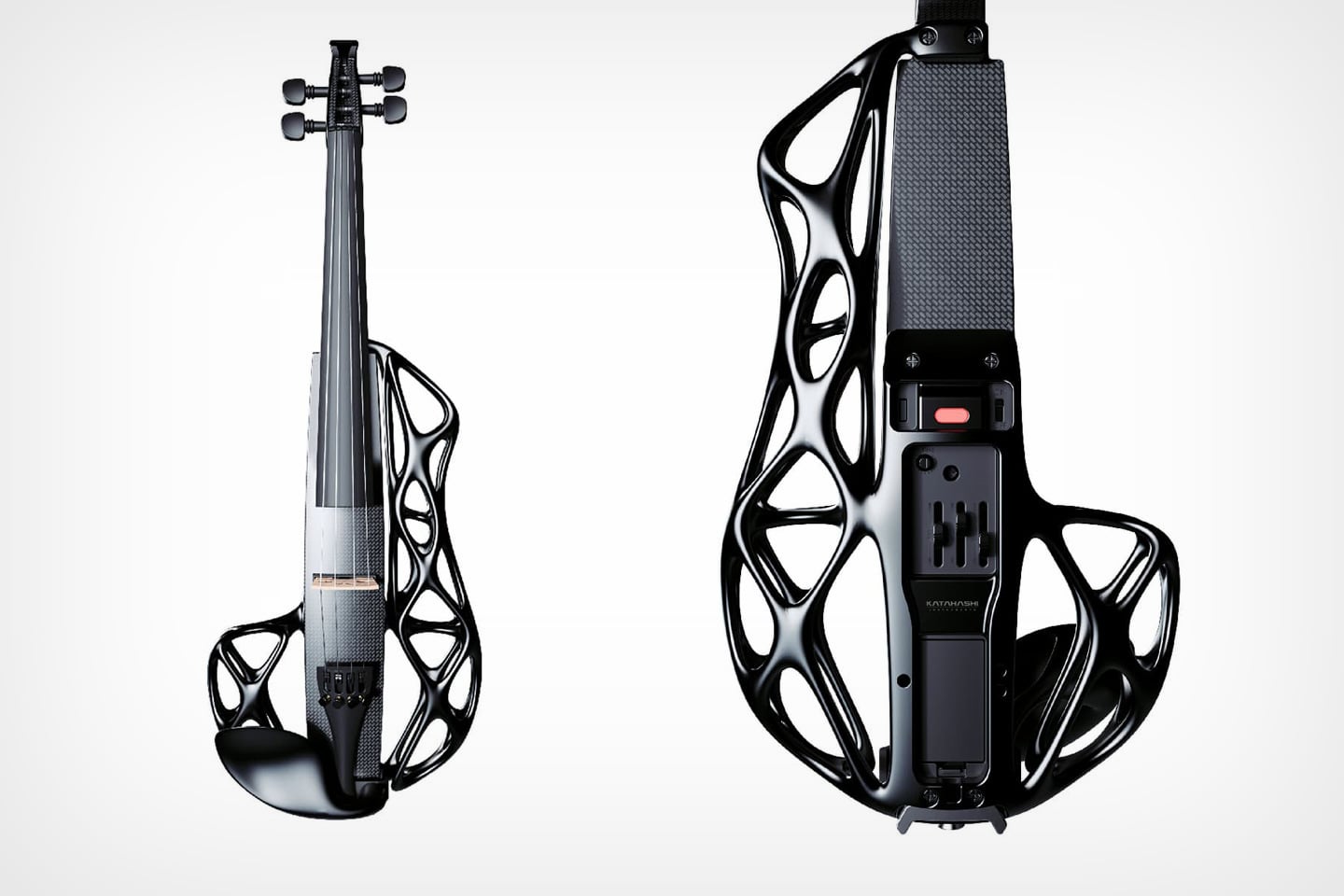
While the name Karen Ultralight Electric Violin may not be the best moniker for this instrument, it’s definitely the kind you won’t be able to ignore. Envisioned by Anima Design for Katahashi Instruments the Karen Ultralight is a dynamic electric violin that ditches conventional wooden acoustic chambers for something more eye-catching. The violin comes with a relatively hollow body made through generative design, which still provides strength with minimal use of material. The 3D printed generative frame sits on a carbon fiber body, with a birchwood fingerboard for an elevated yet familiar playing experience. Working just like an electric guitar, the Karen Ultralight has a 1/4-inch jack output, but even sports an internal 9V battery and a headphone jack so you can ‘silently’ play music directly into your headphones without disturbing the neighbors!
Designer: Anima Design for Katahashi Instruments
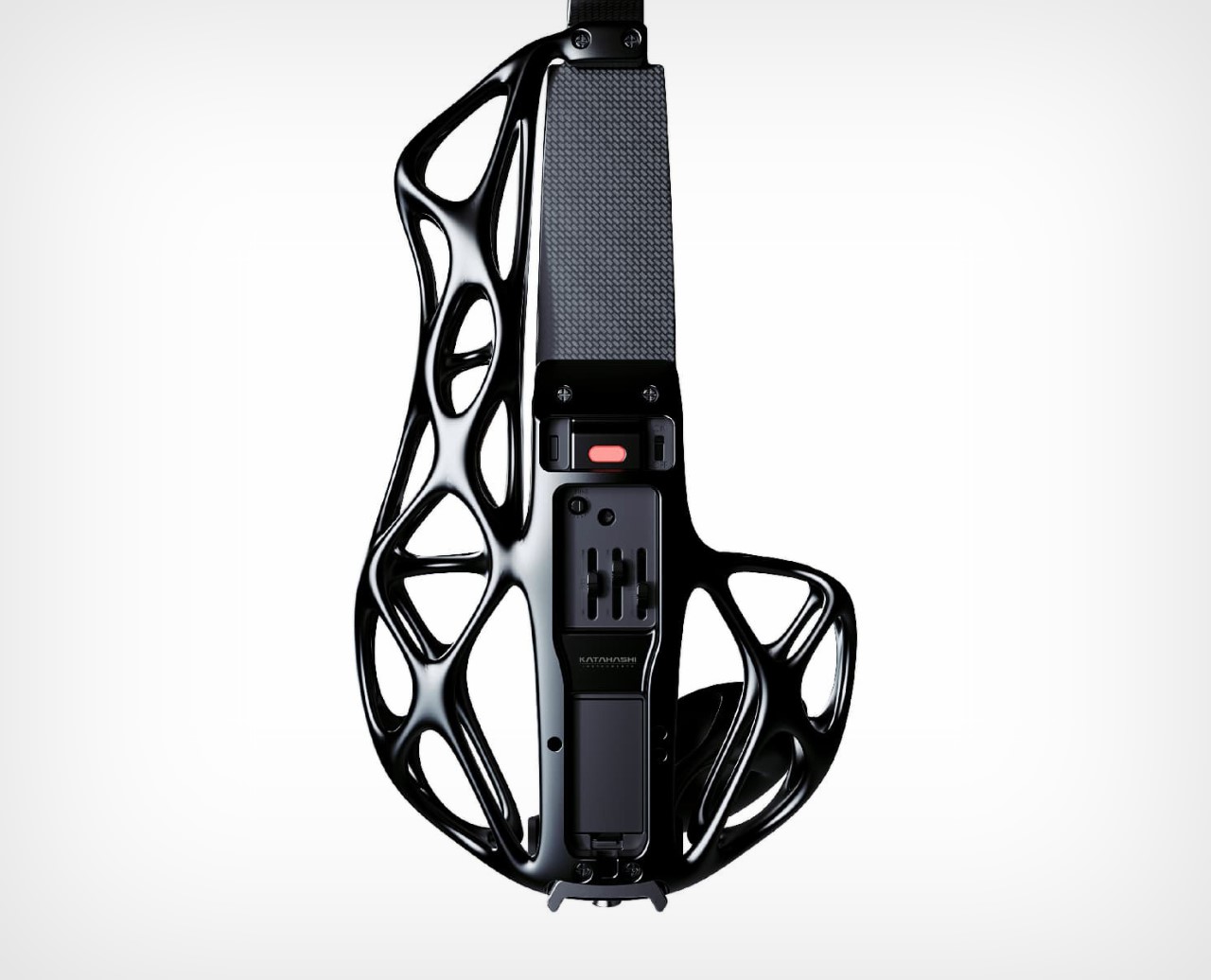
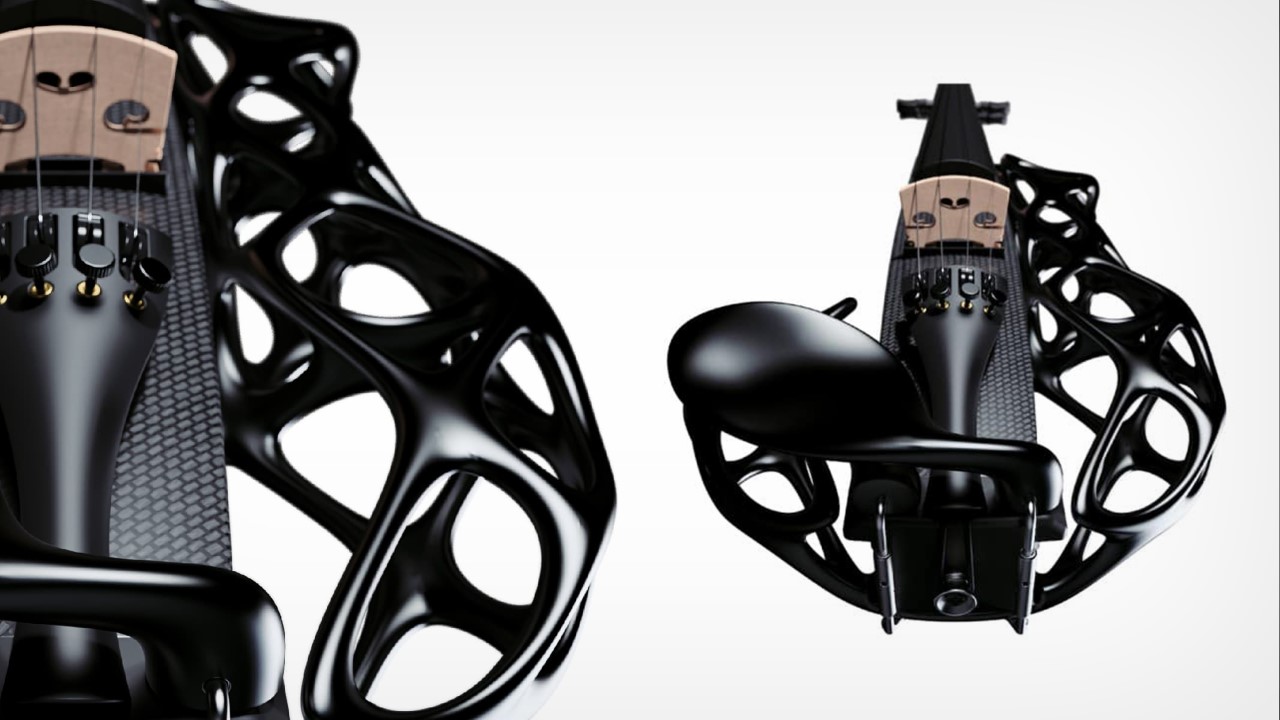
The Karen Ultralight Electric Violin uses a popular design technique called generative design. If the fact that the violin’s frame seems almost organic and skeletal, it’s because that’s exactly what generative design is. Created to mimic natural growth algorithms, generative design tries to balance functionality with frugality, creating a structure (like our skeletons) that does everything with just the right amount of bone. The Karen Ultralight violin attempts the same thing, achieving rigidity without the extra material and mass. This frame comes 3D printed from polyamide (the generic name for Nylon) and can easily be mass-manufactured, or even printed in left-handed variants.
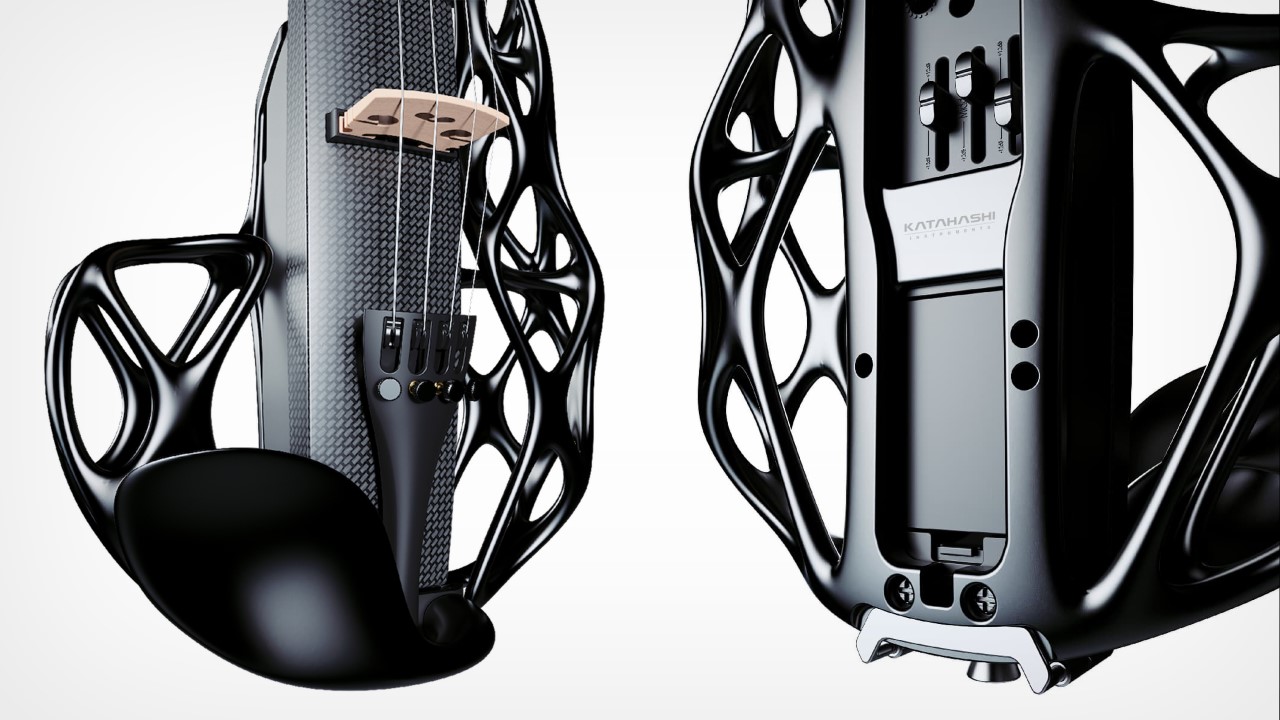
The violin comes in a 4/4 size, with a carbon fiber body, a birchwood fingerboard, and a composite bow to match. On the inside, the Karen has its own active pickup system and can be connected to an amp using the standard 1/4-inch cable that people use with electric guitars. However, a slot on the back lets you put in a 9V battery and plug your own headphones into the Karen, giving you the ability to play silently, right into your ear.
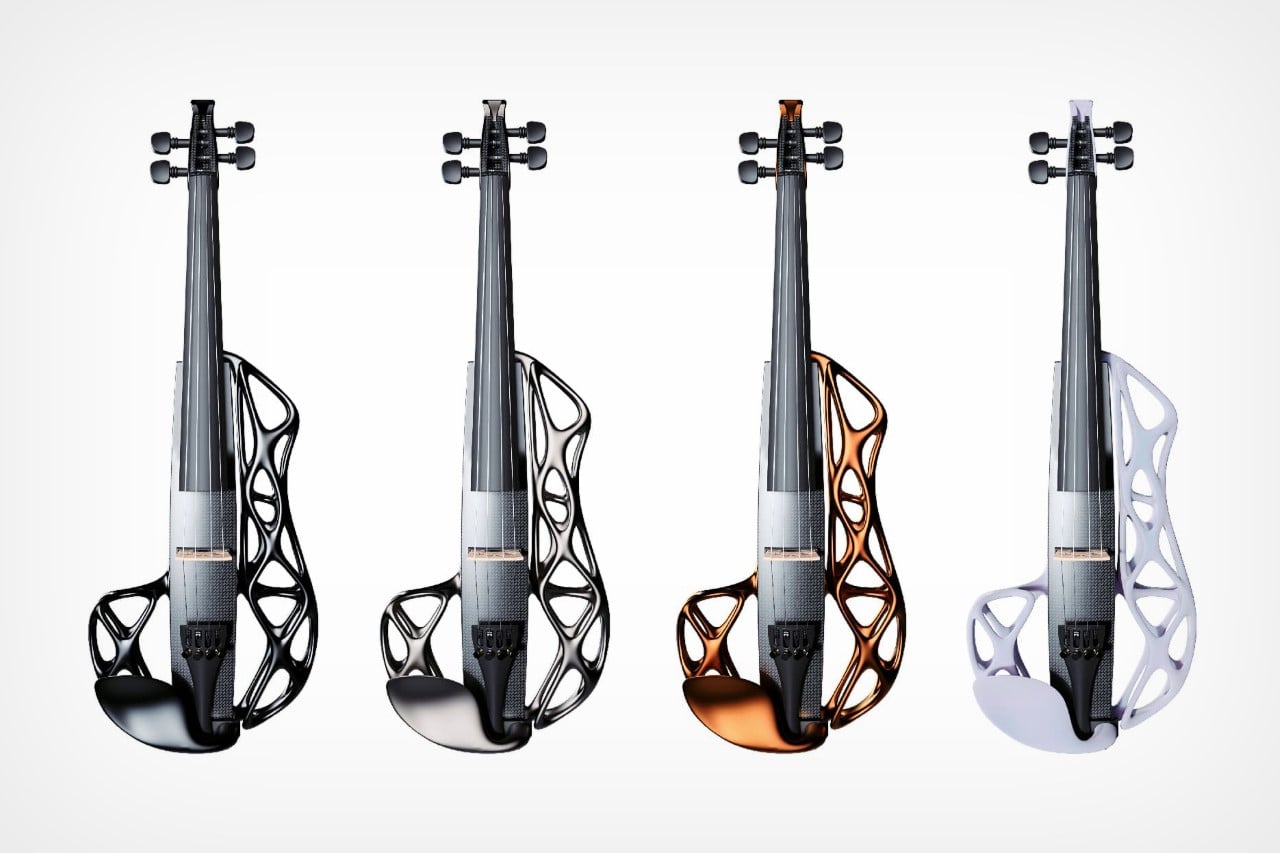
The post Stunning electric violin has a skeletal body made from 3D printed polyamide and carbon fiber first appeared on Yanko Design.




